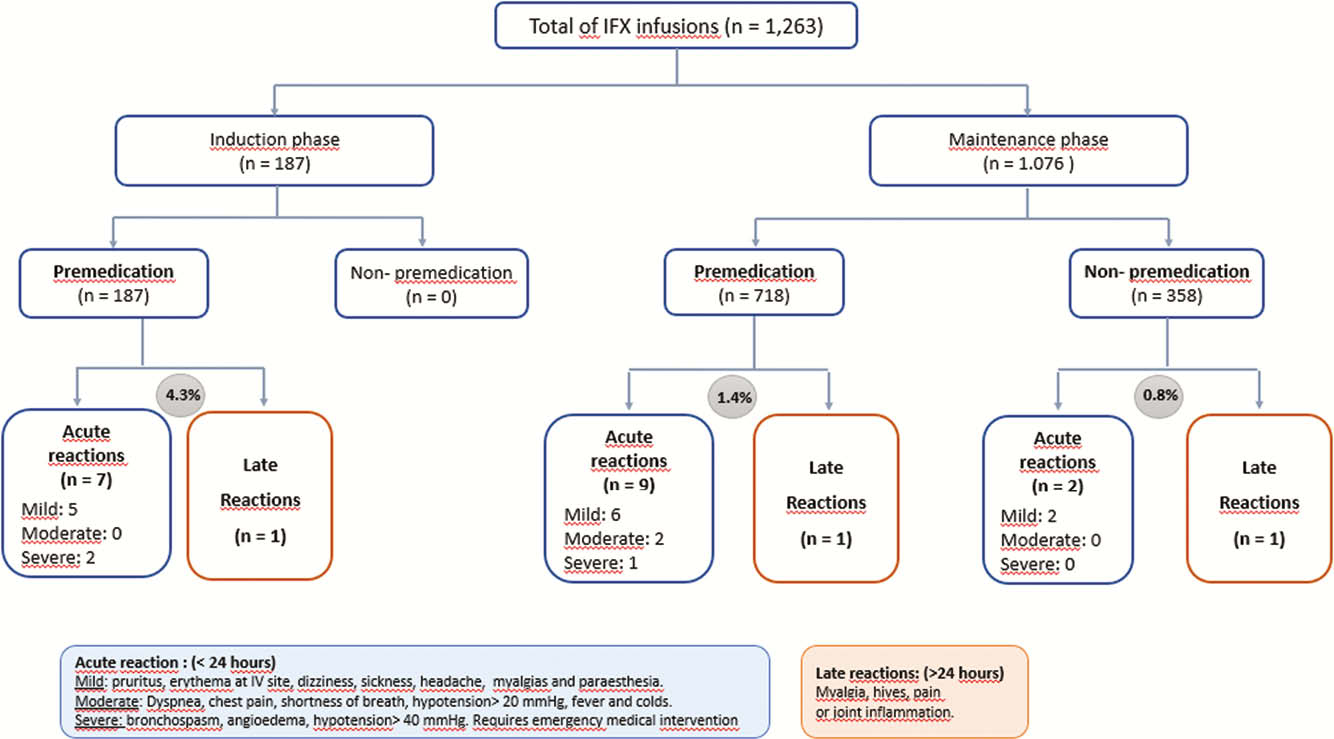P349 Infliximab in inflammatory bowel disease: Is premedication necessary?
P. Núñez1, C. Figueroa2, L. Flores2, P. Ibáñez2, U. Kronberg3, J. Lubascher2, G. Pizarro2, R. Quera2, D. Simian2
1Gastroenterology Department, San Juan de Dios Hospital, IBD Fellow Clínica Las Condes, Santiago, Chile, 2Clínica Las Condes, Gastroenterology Department, Inflammatory Bowel Disease Program, Santiago, Chile, 3Clínica Las Condes, Surgery Department, Colorectal Unit, Inflammatory Bowel Disease Program, Santiago, Chile
Background
The use of infliximab (IFX) in inflammatory bowel disease (IBD) has been associated with a 1–6% risk of infusion reactions. The usefulness of premedication with corticosteroids, paracetamol and/or antihistamines is controversial. The aim of this study is to assess, in IBD patients on IFX, whether there are differences in secondary reactions to the infusion between those who use premedication or not.
Methods
A retrospective cohort study was performed identifying patients with a diagnosis of IBD who received IFX at a tertiary centre in Santiago-Chile, since 2009. Acute reactions were defined as those that occurred in the first 24 h post-infusion and late reactions for more than 24 h. Infusion reactions were classified as mild, moderate and severe. Descriptive and association statistics were used (χ 2;
Results
Sixty-four patients were included with 1,263 infusions in total, 52% men (characteristics in Table 1). Median infusions per patient were 22 (2–66). All induction infusions were administered with premedication and in maintenance, 57% of them. Premedication was given with hydrocortisone, chlorphenamine and paracetamol. Flow chart according to premedication use or not is shown in Figure 1. In the maintenance group, there were 10/718 (1.4%) infusion reactions with premedication and 3/358 (0.8%) without it, non-significant differences (
| Diagnosis | 23 (36) |
| UC | 40 (63) |
| CD | 1 (1) |
| Non-classified IBD | |
| Age (median; range) | 34 (16–74) |
| Years of disease (median; range) | 5 (0 – 49) |
| Difference between diagnostic and use of IFX (median; range) | 4.5 (0 – 38) |
| 57 (89) | |
| Naïve | 3 (5) |
| Previous use of AdalimumabPrevious use of Infliximab (more than 1 year ago) | 4 (6) |
| Induction ( | 167 (89) |
| Standard or conventional | |
| Optimised (10 mg/kg or accelerated 0-1-4 weeks) | 20 (11) |
| Maintenance ( | 845 (79) |
| Standard or conventional | |
| Optimised (10 mg/kg / 4–6 weeks) | 231 (21) |


Conclusion
In this cohort, premedication use in maintenance phase was not effective at reducing the rate of infusion reactions due to IFX. These results suggest that premedication would not be necessary during maintenance.


